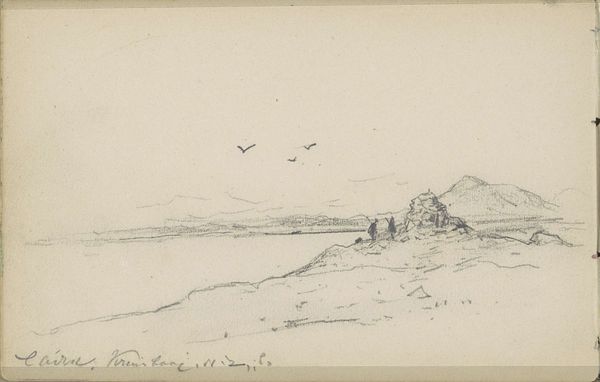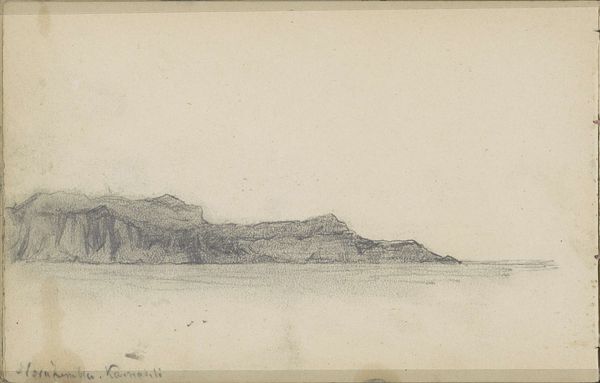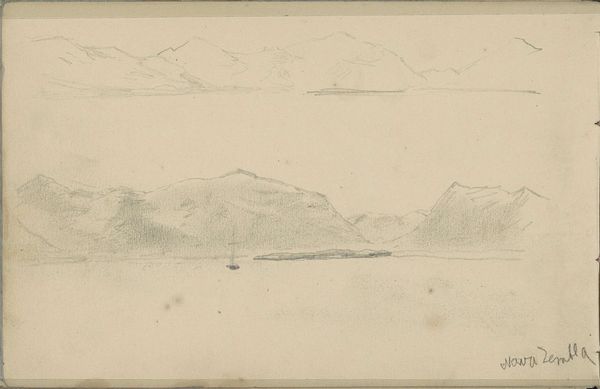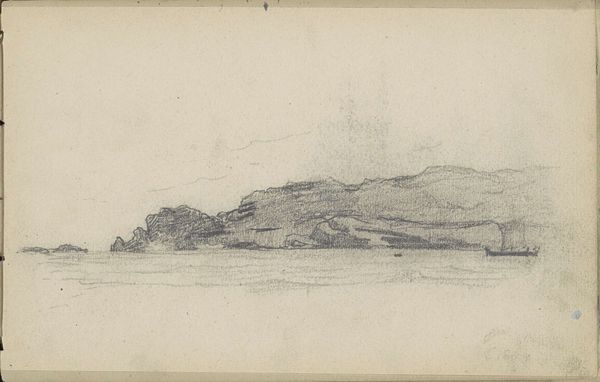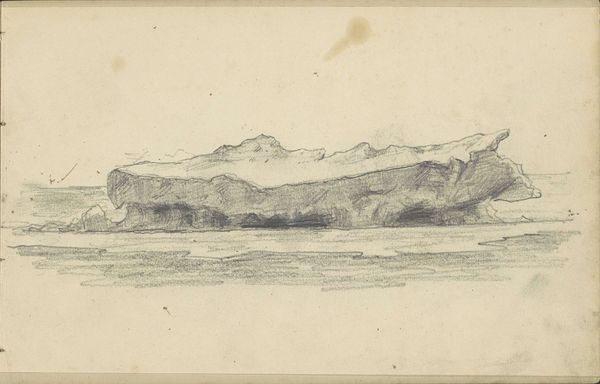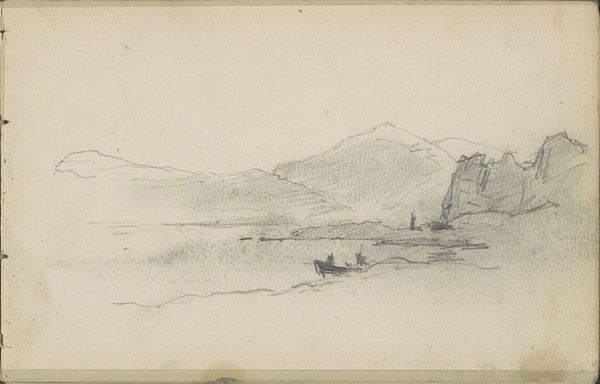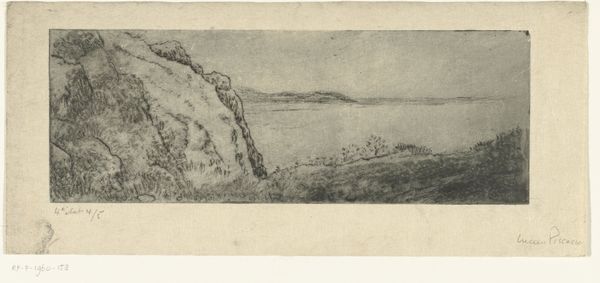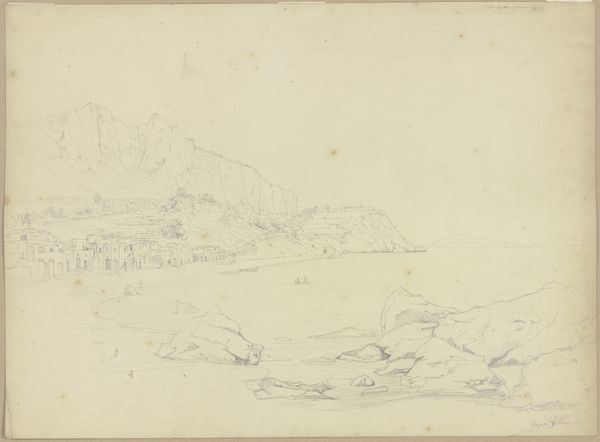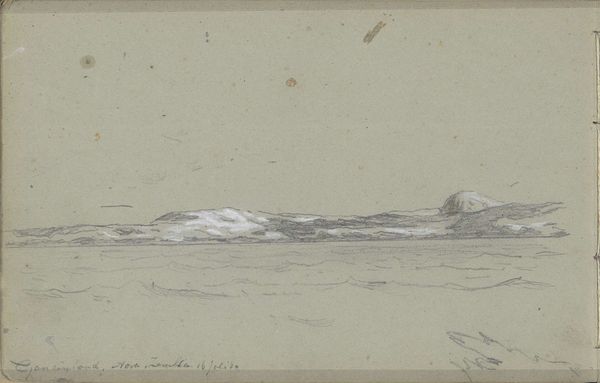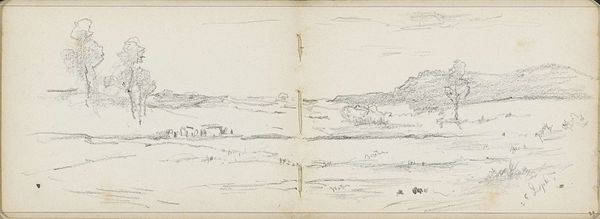
Copyright: Rijks Museum: Open Domain
Editor: This pencil drawing by Louis Apol, made in 1880, captures "A View of the South-Southeast Side of Nova Zembla." It feels so desolate, like the end of the world. The scene is very still and stark. What do you see in this piece, especially considering its time? Curator: What strikes me is the romanticization, or perhaps the mythologizing, of arctic exploration during this period. We need to consider the political undercurrents – this was a time of intense colonial activity, where landscapes were not simply observed, but also possessed, mapped, and exploited. This image, while seemingly a simple landscape, becomes a statement about the relationship between humanity and untamed nature. Editor: So you are saying there's a hidden message there, not just appreciation for landscape beauty? Curator: Absolutely. Who is "allowed" to access and depict such a landscape, and whose narrative does it reinforce? We must interrogate the concept of 'discovery' itself, often a violent erasure of indigenous presence. Think about the labor, resources, and often devastating impact of these expeditions on local populations and the environment. Apol's work becomes an artifact of this history. Editor: It’s easy to forget the human cost when viewing these landscapes from a distance. Thanks for widening my view to the people whose stories aren't being sketched. Curator: And this perspective helps us view contemporary issues like climate change in light of colonial patterns. We need a shift to acknowledge those unheard voices in how we discuss representation, ownership and art’s relationship to progress.
Comments
No comments
Be the first to comment and join the conversation on the ultimate creative platform.
